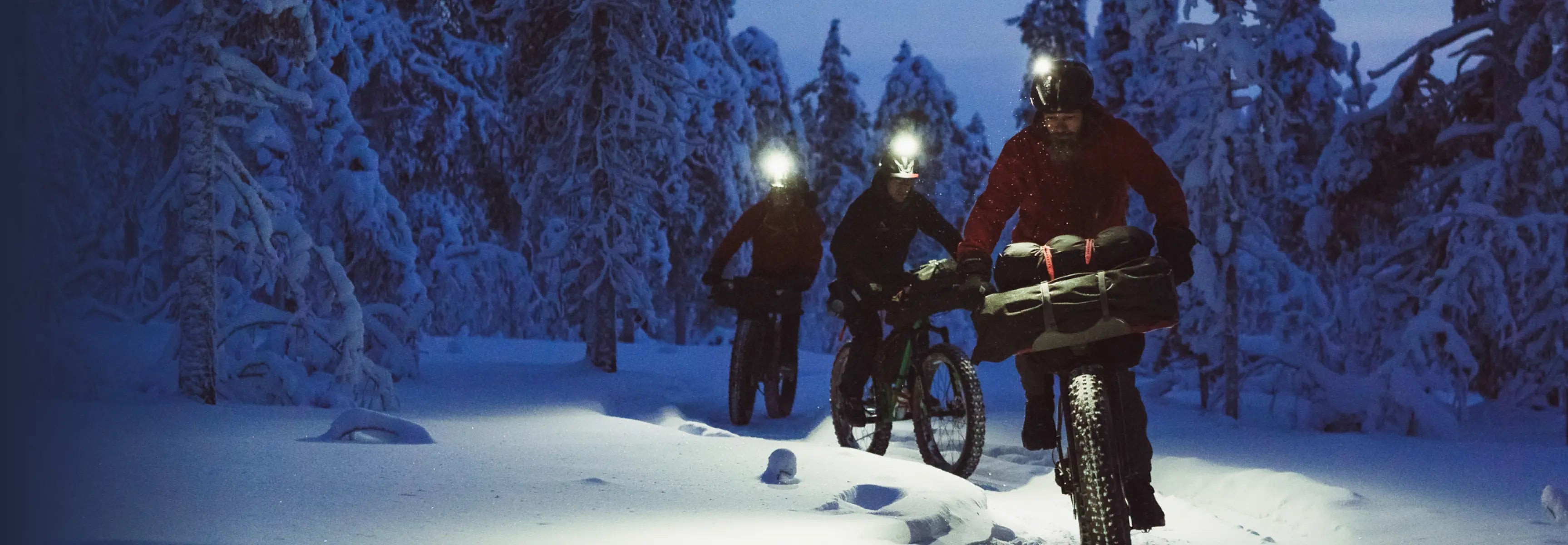
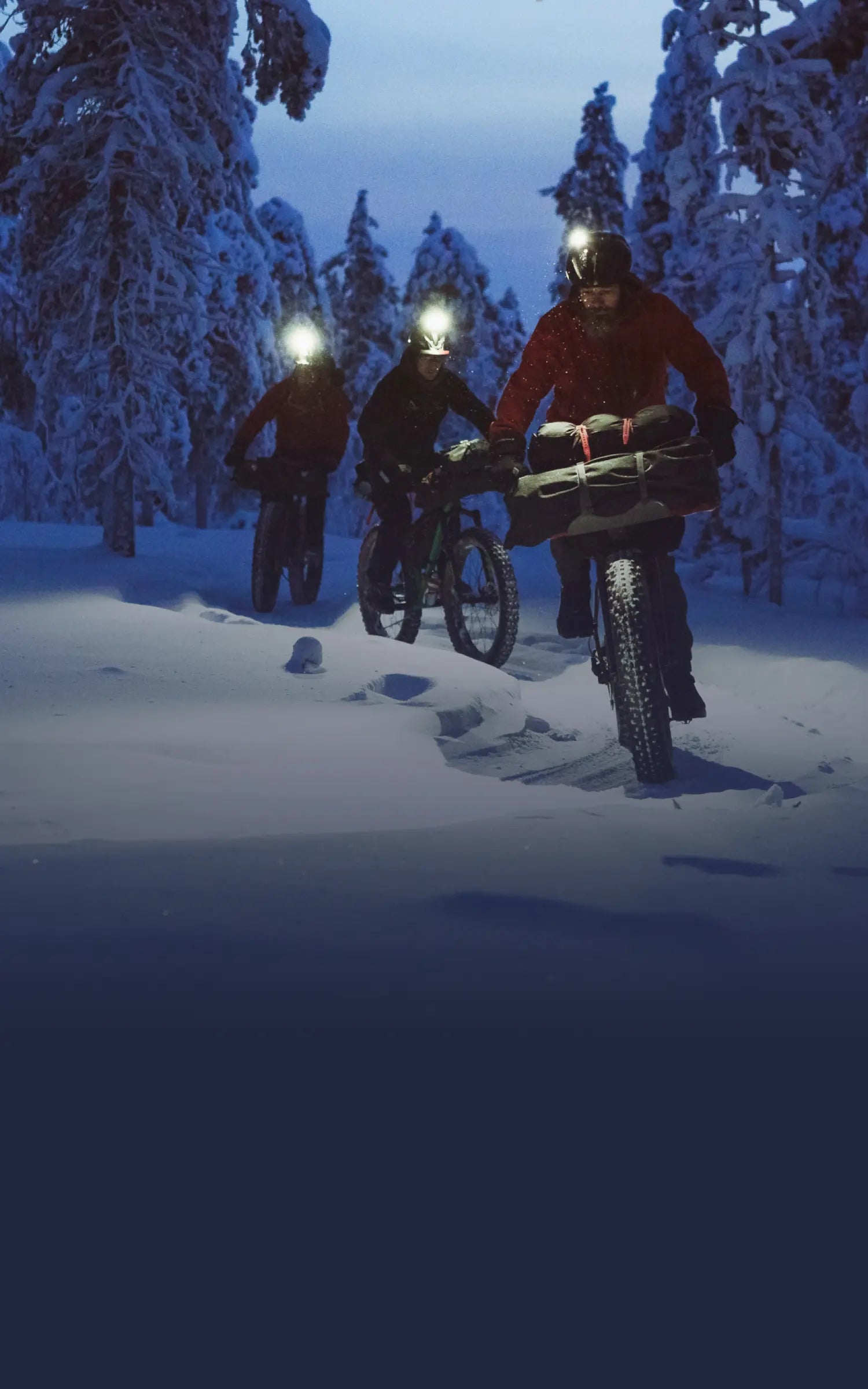
Suunto Blog
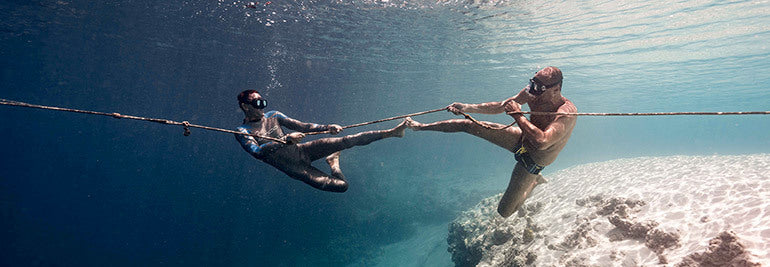
WATCH THE WORLDS MOST AMAZING FREEDIVERS COMPETE TO WIN AT SUUNTO VERTICAL BLUE
In its 10th edition this year, the Vertical Blue competition is comprised of three depth disciplines: Constant Weight, Constant No-Fins and Free Immersion (CWT, CNF, FIM respectively). #VB2017 is an AIDA sanctioned event which offers competitors six official dives to challenge themselves to obtain the coveted title of “Champion” at the most elite freediving competition in the world.
William’s rival in free immersion, Miguel Lozano of Spain, will also be on hand to conquer new territory, as well as diving legends Davide Carrera & Homar Leuci of Italy. Heating things up for the ladies are world record holder Sayuri Kinoshita of Japan and first-time attendee (but renowned Italian mistress of the deep) Alessia Zecchini.
Over the course of the next 10 days freediving fans around the globe can watch the record-breaking battles among the world’s most talented athletes, who are literally pushing the limits on what was once thought impossible for the human body to do.
Stay tuned here and via the Suunto Diving + Vertical Blue Facebook pages, the VB event website, Suunto & VB Instagram, the VB Youtube Channel, Trubridge’s Twitter feed as well as the Vertical Blue twitter handle & hashtags #VB2017 and #verticalblue for a live feed from the platform, amazing videos & images and results.
Join us as we watch dive history in the making!
All images © Daan Verhoeven/Vertical Blue

EMELIE TRAVELS TO TIBET TO CLIMB HIGHER THAN EVER BEFORE
Emelie Forsberg is travelling to Cho Oyu together with Kilian Jornet. After considering various options the couple chose this mountain that has a reputation as one of the least technically difficult 8000-meter peaks in the Himalayan range and that is reasonably accessible from the base camp. Kilian will use Cho Oyu as valuable preparation for climbing Everest. He will be traveling directly to the highest mountain on Earth after Cho Oyu.
Emelie, how are you feeling before attempting to climb your first 8000-meter peak?
I´m super exited and so motivated to give my all. I know it´s not sure at all that I can reach the summit, but the adventure and the journey there will be very interesting.
How did you prepare for this project? Did you train differently than you would otherwise at this time of the year?
We did sleep in an altitude tent, and I was not fresh after that so I couldn’t train the same as I normally do. I tried to do that in December and I was so tired after hard trainings. So I did a little longer days instead which can be good for the summit attempt.
What do you like about mountaineering?
I think mountaineering is just the step after skiing and running, when we come to more technical terrain, that’s when the mountaineering starts! I like it because it´s like the continuation of skiing and running, we need to be able to climb mountains to get ourselves there. I like the focus I need and that it´s so much more I need to learn. Every time I get more comfortable in mountaineering there are higher levels to go, so it never ends!
How do you like Tibet?
Never been there. It will be a new experience.
What’s the highest you have been so far?
”Only” 6600 meters!
How do you adapt to altitude?
It can be different from time to time, but I have never felt really bad in altitude. But over 7500m will be very different, I think.
What will the biggest challenges be for you?
The altitude for sure, and to be moving for over 20 hours.
What are the conditions like on Cho Oyu currently?
Normally in the beginning of May it´s pretty good conditions; not too icy, not too much snow, and pretty stable weather.
What’s the goal of this project?
For sure it would be a success if I can go to the summit, but everything is an experience that leads us somewhere.

One trip to the Himalayas, two challenges
After taking part in the Mezzalama on Saturday (a skimo race where Kilian finished second together with Marti Werner and Martin Anthamatten) there was no time to relax: on Sunday he boarded a plane en route to the Himalayas, where he expects to spend the next few weeks on two very different climbing projects.
First stop: Cho Oyu
During the first part of his trip Kilian Jornet will attempt to climb Cho Oyu (8,201m), the world’s sixth highest mountain. He will be accompanied by his companion Emelie Forsberg.
Kilian and Emelie looked for a peak that would be reasonably accessible from base camp. After considering various options they chose this mountain which has a reputation as one of the least technically difficult in the Himalayan range.
“It will be interesting to see how we feel as we will have to acclimatize very quickly. We’ve been preparing this expedition for weeks but we won’t know how our bodies will react until we get there. It will be an interesting experience and Emelie’s first 8,000m and I want to be there to accompany her. As for me, it will be good preparation for Everest because I’ll be better acclimatised when I get there,” Kilian says.
The pair will be on Cho Oyu for two weeks before Kilian prepares himself for the second part of the trip.
Everest, the remaining giant
In mid-May Kilian will travel to Tíbet to reach the monastery at Rongbuk, at 5,000m, the starting point for the Everest expedition (8.848m). This time the team is even smaller and only the cameraman Sébastien Montaz-Rosset will accompany him. Kilian’s objective is to conquer the world’s highest mountain and complete his personal project, Summits of My Life.
Over the past six years Kilian has travelled around the world setting climbing records on the world’s most iconic mountains. He began on Mont Blanc in 2012 and since then has climbed mountains in Europe (Mont Blanc and Cervino), North America (Denali) and South America (Aconcagua). Now, to complete the project, for the second time he will attempt the ascent of Everest after having to postpone the 2016 attempt due to bad weather conditions.
The team planned to travel to the Himalayas in autumn but, unable to obtain permits, decided to bring it forward to spring. “This year will be different from 2016 as there will be more people in the base camp while last year we were alone. The reason for wanting to try it in August-September is the temperatures are a little warmer and there is less risk of freezing. In spite of everything, the knowledge we acquired last year will prove vital in this expedition,” Kilian explains.
As they did last year, the Summits of My Life team will try to reach the summit of Everest via the north face. The north face is the least well known, as most commercial expeditions go via the south side. Kilian still doesn’t know what route he will take as it will depend on the weather conditions. The idea is to attempt it via either the Norton or the Hornbein corridors.
During the first few days the team will establish the advanced base camp (ABC) at 6,300m. From there they will make several excursions to acclimatise and reconnoitre the terrain before heading down to the starting point. This is the basic principle of Summits of My Life: ascending from the last inhabited place and returning to it once the summit has been reached. On this occasion the point of departure will be the Rongbuk monastery at 5,000m.
Kilian knows that on Everest the most important things to bear in mind are the altitude and the weather conditions: “There are many factors in play that will depend on how I feel at altitude and the prevailing conditions during the expedition. That’s where we will take the decisions, but knowing that we want to do it as we have always done - light and quick. There are people who think it’s madness but for me the mountain is a space where everyone should be free to do what they think they can do. I like to travel light so I can be quick. In this way, we spend less time at altitude and suffer less fatigue, although we are aware that it makes the expedition more risky. However, weighing everything up, this is the way we’ve chosen and that we will attempt again on Everest.”
Kilian Jornet expects to spend a month on Everest in order to make the attempt before returning to Europe.
Our Everest, a global campaign
The expedition can be followed using the hashtag #OurEverest. The idea is to bring together the community of followers who have backed the project since the beginning and who have made the expedition to Everest possible.
“We began this challenge together five years ago and with our values and our approach to the mountain we’ve got to this point. Although we don’t know what will happen, I’m clear about one thing: it’s not my Everest, but ours, everyone who has in one way or another contributed to making this project a reality,” says Kilian.
Stay tuned for updates! You can learn more about the project at summitsofmylife.com
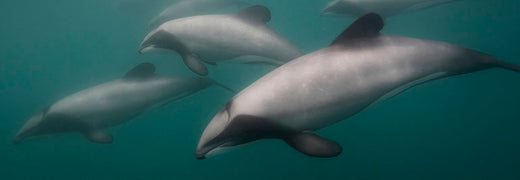
Meet the most endangered sea mammal in existence: Hector’s Dolphins
How did you get involved?
It’s actually a bit of a quirky story – I became involved in the effort’s to save the Hector and Maui dolphins during the attempt to be the first man to free dive 100m in free diving. We called it Project Hector because 100m is a ‘hectometer’ – and to raise awareness of what’s happening to Hector’s Dolphins. We did the project, and it was a huge success, but my dedication to the cause didn’t end – so I've kept on campaigning.
How endangered are they?
Extremely. There’s only about 7,500 left worldwide – down from a population of 29,000 in the seventies. The Maui’s Dolphin sub-species of Hector’s Dolphins is thought to have only about 50 left in the population.
You’ve only had one chance to swim with them…
I’ve swum with other dolphins in the wild many times – where I live in the Bahamas, you see the Atlantic Spotted Dolphins, and Bottle-nosed Dolphins as well. But the swim with the Hector’s Dolphins was a really magical experience. It was in early 2011 when I was in New Zealand, and went to a place close to Christchurch – only a short encounter. Five or ten minutes. But even that was something I’ll never forget. They’re the 'Mickey Mouse' of the cetaceans – the dorsal fin is shaped like Mickey’s ear. They're all soft curves with colored shapes, gray and white, all over the body.
World champion freediver Will Trubridge wants to raise awareness to protect the endangered Hector’s Dolphins.
It’s much different to swim with a dolphin than any other marine life, no?
Or even terrestrial life. Alongside them, watching them and watching you, it’s very apparent from just the look in their eyes that they are aware of you, studying you, curious about you. It’s a look you don’t get from other animals even cats and dogs. Maybe some monkeys. They’re very present, very aware creatures. Being alongside that and encountering that is a very incredible experience.
Any other marine life you’ve bumped into down below?
All the interactions I’ve had with big marine life were dolphins, sharks and manta rays. I’ve never actually swum with whales yet, never had the opportunity! That’s something I’d like to do. I’ve been in the water when humpbacks were close, just haven’t spotted one. In my childhood was with a dubong – it’s like a manatee – in Vanuatu. We didn’t know about him, although he was quite famous – the locals had been feeding it for years, and it was living all alone in the harbor. We jumped in to go snorkeling, we almost got blown out of the water by a bus-sized hunk of flesh trying to mate with anything it found. As a kid that was quite intimidating!
How can we help the fight to save them?
The organization NABU is leading the fight to save the Hector’s Dolphin – the goal is a complete ban on trawling or gill nets in their habitats. But we are up against a very stubborn and short-sighted government. You can learn more at hectorsdolphins.com
Diving offers a unique chance for humans to observe marine animals in their native environment. Stay tuned to for even more incredible stories of divers and the denizens of the deep sharing space beneath the surface of the sea!
What is your favourite marine animal and why?
Share your story on Instagram by April 23 and tag your post with #suuntodive
The three most inspiring posts will win easy-to-use, nitrox-capable, large-displayed Suunto Zoop Novo dive computers. For the terms and conditions click here
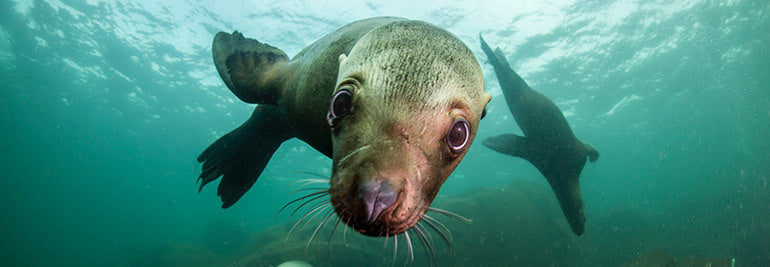
The coolest dive partners aren’t humans – they’re sea lions!
There was easily a couple hundred sea lions around
The sea lion colony at Hornby Island is active, and has little fear of people. My dive happened to be right around the biggest herring spawn of the year, meaning they were all around waiting for a feast. Ones you see solo in the wild tend to be a lot more shy.
They just want to play…
Of course, sea lions can be dangerous. I’m not saying you should go out and hug a sea lion – but if you happen to dive with this group you don’t have a choice. As soon as you’re in the water, they just want something to play with. They can come across as quite aggressive – they’ll nip at your suit, the top of your head, or tug on your wings, but they aren’t trying to injure you. I’ve had one put his full mouth on my dorm port – and another one yanked me up to the surface to play.
… but it’s on their terms
When they’re done, they’ll just head back to the rocks to sunbathe.
These are ‘Stellar Sea Lions’
That’s actually the name of the breed. I saw a few California Sea Lions as well, but mostly Stellars.
It’s super obvious they’re super smart
When you dive with these sea lions, you get the perception that it’s all play. They’re very curious, and they’re very trainable. At the seaquarium, they train the sea lions to undergo all sorts of vetinerary procedures to keep them healthy.
That part of British Columbia is absolutely stunning
On this trip I was diving a wreck called Capilano. There’s so much to see underwater. Some of the best diving in the world! Nutrient rich water year round. Stunning wildlife. Plenty of wrecks.
We dove during a blizzard
Full white-out topside. Great visibility below. Sure, the water is cold, but the air above was even colder. If you’ve got the right gear it’s no big deal.
One sea lion loved my Suunto Eon!
He kept tugging at my dive computer – at one point he even looked like he was checking out my dive stats. So maybe one day they’ll make a good diver partner anyways!
Diving offers a unique chance for humans to observe marine animals in their native environment. Stay tuned for even more incredible stories of divers and the denizens of the deep sharing space beneath the surface of the sea!

VO2 MAX IntervalS with XTerra champion Josiah Middaugh
In modern times, interval training is a fundamental way to train endurance performance. I overheard my 10-year-old telling his brother, “the best way to get faster is to do intervals, that’s what my gym teacher said.” For the general public, any intervals will do, but for the highly trained endurance athlete we need to get a little more scientific.
The basic premise of interval training is that you are able to swim, bike, or run at a higher intensity if your training is intermittent versus continuous. A 5k runner, for example, could head out the door and cover 3.1 miles as fast as possible a couple times a week, but would have a hard time holding their goal pace for much more than one mile. Instead, if the training was broken into half mile intervals, a race-pace could be achieved with every 800 meter bout as long as recovery was adequate. With each repeated bout there is a cumulative effect, up to a certain point, to stimulate adaptation. Beyond a certain point, maladaptation can occur.
Types of Intervals
In an effort to simplify we will focus our discussion on the most potent type of intervals known as VO2 max intervals. VO2 max is defined as an individual’s highest rate of oxygen consumption (milliliters of oxygen per kilogram of body weight per minute). A common misconception is that interval training is strictly anaerobic. These types of intervals do have a big anaerobic component, but by definition have you operating near your peak oxygen consumption, which is the key. Most athletes can work at VO2 max for only about 5 to 9 minutes, so intervals at VO2 max need to be shorter than that. If the interval is too short, then the anaerobic contribution is big, but there is not enough time to actually get to VO2 max. Personally I like 2-3 minutes ON with about equal recovery.
Pacing Strategy
Pacing is critical. Suppose you are running those 800 meter bouts and you start out by sprinting the first 200 meters and then have a gradual slow-down for the next 600 meters. Your average pace might be on target, but you have failed to reach VO2 max since you started with this huge anaerobic effort and then settled into a pace slower than your VO2 max intensity.
There is something called a slow-component to VO2 max. This means that for any pace above lactate threshold, you will eventually reach VO2 max if the exercise is continued. So you do want to go fast, but to spend the most amount of time near VO2 max, you want a pace you can sustain for 2-3 minutes. If performed correctly your oxygen consumption will approach VO2 max about half-way through each hard effort. So if your workout is 6 x 2.5 minutes, you might in reality only spend a total of 7.5 minutes at VO2 max, which is fine. If performed poorly you may only spend a few seconds of each interval at VO2 max or none at all.
Graph 1: Poor pacing strategy with high power output (purple) at the start of each bout and power dropping on each bout.
Graph 2: Better pacing strategy here. In this case, power (purple) within each bout was very consistent, but there was still a drop off in power for the last 3 bouts.
Graph 3: Power (white) fairly consistent throughout hard efforts. Notice peak heart rate (orange) is not achieved until the 6th bout. Different athletes, different software.
Work:Rest Ratios
An ideal range for work portion is about 1.5 to 4 minutes. We like the 2-3 minute range the best with a few exceptions. Work to rest ratios are usually around 1:1. The rest interval can be adjusted to increase or decrease the intensity of the workout. If you are having a hard time keeping pace, try adding 30 seconds rest. If you are completing the workout with energy to spare, try 30 seconds less rest the next time out.
How Intense?
Pace or power are your best guides for this type of training. Heart rate lags so far behind that it is not the best indicator and you don’t want to try to spike your heart rate to start each effort.
If you have power on the bike, I like to use 110% FTP for 3 minute bouts, and 115% FTP for 2 minute bouts.
For running, a 5k race pace or slightly faster will get you there. A 15 minute 5k runner can just use their 5k pace, but a 25 minute 5k runner might need to increase the pace slightly.
If you are performing intervals uphill and don’t have power or pace to guide you, try this approach. Warm up to the base of consistent climb. On your first bout, hold back a fraction and note your distance at 1 minute and 2 minutes. Make a mark in the dirt. Recover on the downhill and repeat the same section of the hill attempting to at least reach the same finishing mark or go slightly further. Try to do this without going any further for that first minute.
How Much?
I mentioned earlier that this is the most potent form of training. So your goal is to be able to maintain the quality for the entire workout. For most people this means 15-21 minutes of total hard work. So that is 8-10 bouts of 2 minutes, or 5-7 bouts of 3 minutes. Keep it simple. Shoot for a very similar intensity every time and if you start to slow down you have done too much.
How Often?
A little bit can go a long way. I try to space out this type of training more than any other. For most people that means two quality sessions per week with one on the bike and one on the run. Training becomes more polarized during a VO2 max cycle with recovery and endurance workouts separating VO2 max bouts. Total training volume is reduced and avoid excessively long workouts during this time.
Soon Ripe, Soon Rotten
With this type of training, most people will plateau in about 6 weeks. I like to sprinkle in this type of training as key races are approaching and save heavy blocks of VO2 max interval training for the most important races of the season.
Josiah Middaugh is the reigning XTERRA Pan America Champion and 2015 XTERRA World Champion. He has a master’s degree in kinesiology and has been a certified personal trainer for 15 years (NSCA-CSCS).
Get to know Josiah
Learn how to use Suunto Spartan's Interval feature










































































